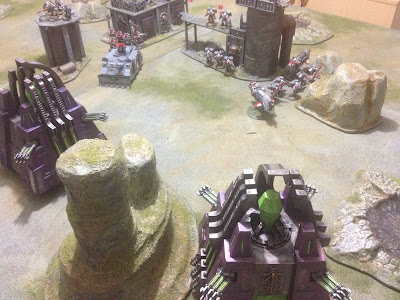Now that I have completed my WW2 campaign I thought I would list down my initial thoughts on what worked and what I would change for next time. So with no pictures of a WW2 game I could resist including some pictures of my Hundred Year War Minifies which are slowly being painted. A few more units and I will not be too far away from a small game of Lion Rampant.
 |
| Completed 3 units last week |
What worked? Well the dice generated terrain produced many interesting tabletop layouts which I would not have thought up myself. Using a gridded tabletop helps with this sort of random approach as you count X squares across and Y squares down to place terrain features.
The campaign map helped to define the terrain setup depending on the campaign zone being attacked, e.g. a town, wooded area, river, etc. This worked fine, but other than that the map was more of a tally of wins and loses.
 |
| Campaign map |
In future I plan to introduce two changes here:
1) Allocation of more points for certain locations or objectives, such as critical cross-roads, bridges, etc.
2) Where zones become isolated (surrounded on 3 sides) there is an impact on the defenders. (Thanks to Norm for this suggestion). However, I am not sure of the impacts yet.
The games rules themselves, have become reasonably settled for the most with only two areas I am considering amending. They are: air support and armoured (mechanised) infantry.
For air support I am considering all attacks are successful with a 4+ or the unit takes a disruption, as I don't want air support hanging around too long.
Armoured infantry units are currently treated as having better fire power than infantry when attacking units categorised as infantry (foot, motorised and armoured). I am considering making their fire power the same as infantry with a 4+ to hit, but allow a combat move after combat so they can do a shoot and move. Only tanks at present have that move capability. Reconnaissance units (light tanks and armoured cars) would be the same, but have 3+ against infantry to help differentiate between armoured infantry and reconnaisance units.
Campaign attacks were either limited attacks or all out (major) attacks. Both attacks had available 12 units plus the score of 2 average dice for limited and 3 average for major attack. The supply cost of a major attack was twice that of a limited attack. Any major attack pretty much guaranteed a win removing any risk element. While it could be argued that being careful with your supplies allowed a player the luxury of some certain wins. It was almost too certain. While liking the idea of different strength attacks, as it makes a player choose, I plan to change the advantages of a major attack. Preliminary ideas are:
1) major attacks get the same number of units as a limited attack, but also get air support, reserves arrive on a 3+ rather than a 4+ (better planning and unit availability) and artillery which get disrupted on a 1 get automatic regroup and do not need the usual dice roll of 3+ (representing better supply). 2) Game time would start when the player wants and are not dictated by the dice. During the campaign the start time was the combined score of two average dice plus 2 hours. So if a 3 and 4 were rolled the battle started at 9am and each turn moved the clock forward 1 hour till nightfall at 7pm. When the game ended unless victory points were even, then additional turns were played using night rules until one side or the other ceased additional points.

















































